Announcements
Access the official MAROON-X Integration Time Calculator (ITC) on a page outside of the Gemini website. The ITC is providing SNR values that can be used to estimate RV expected RV precision using the empirical results provided below.
Below are example SNR plots for two stars observed during the commissioning phase in December 2019. These examples show the measured SNR in each order for the combined flux of all three object fibers. These data are not extinction corrected, neither are the telluric absorption features removed or the flux from overlapping orders summed up. They give a snapshot of what to expect from a typical observation.
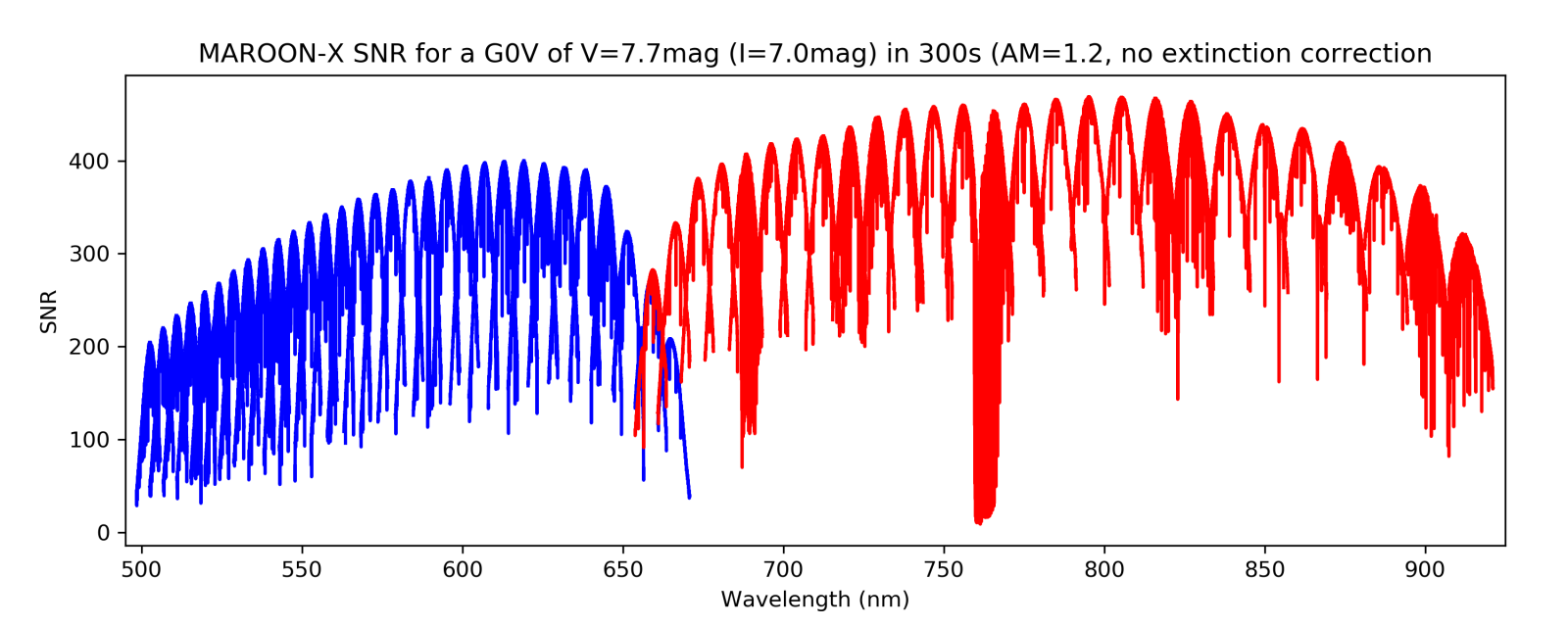
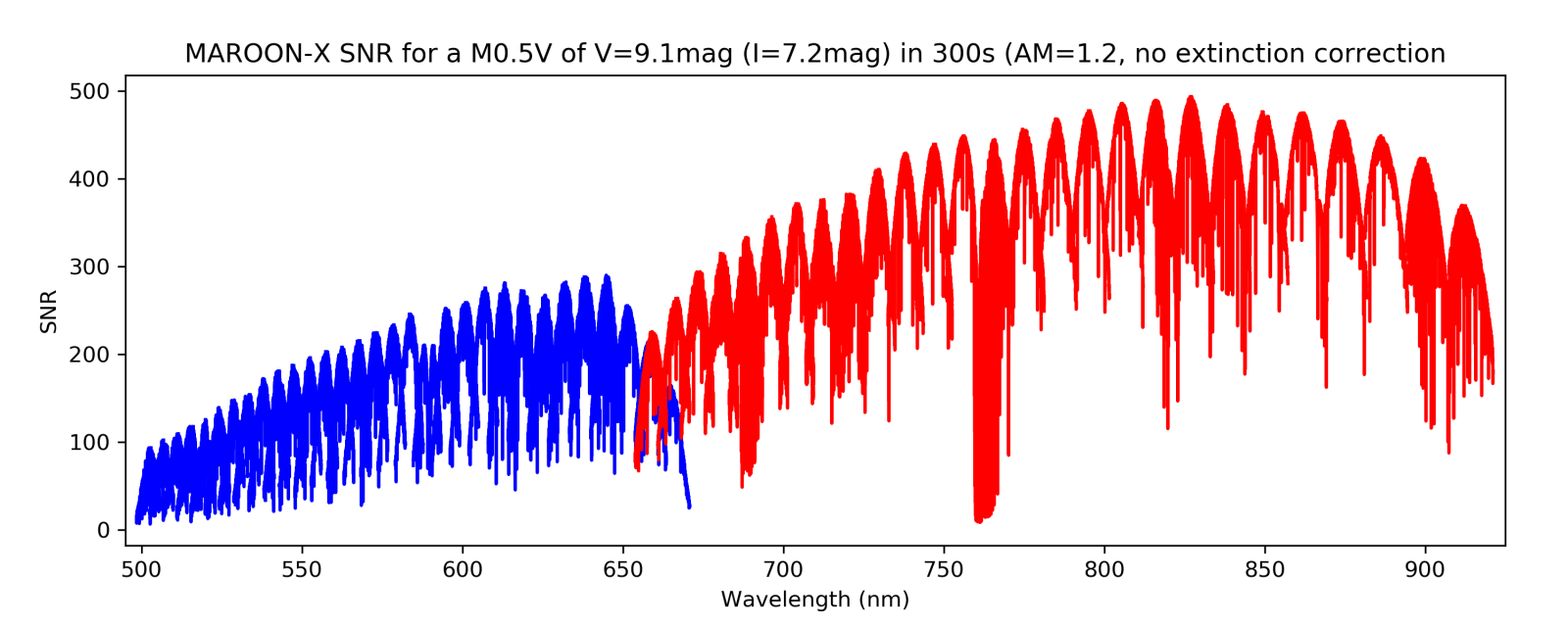
Figure F1: Signal-to-noise ratio (SNR) for two stars of different spectral type observed during the commissioning run in December 2019.
Empirical Radial Velocity Uncertainties:
For a given instrument resolving power, the achievable RV precision is determined by the intrinsic RV information content in the spectrum which depends on the stellar type (density and depth of absorption lines), the rotational velocity (line broadening) and the SNR of the spectrum.
Empirically achieved RV uncertainties derived with SERVAL (Zechmeister et al. 2018, A&A 609, A12) for a number of slowly rotating stars of different spectral types are shown below. These figures can be used to predict the expected RV uncertainty from the peak SNR of the spectrum obtained using the MAROON-X ITC.
The uncertainties derived with SERVAL contain a small level of instrumental and stellar activity noise since they are derived from the spread of RVs of the different echelle orders of each spectrum compared to the empirical template built from the ensemble of measurements of the same target. Chromatic instrument drifts and chromatic activity signals are thus increasing the RV uncertainties. However, any bulk instrument drifts and stellar activity signals need to be accounted for in addition to the internal uncertainties.
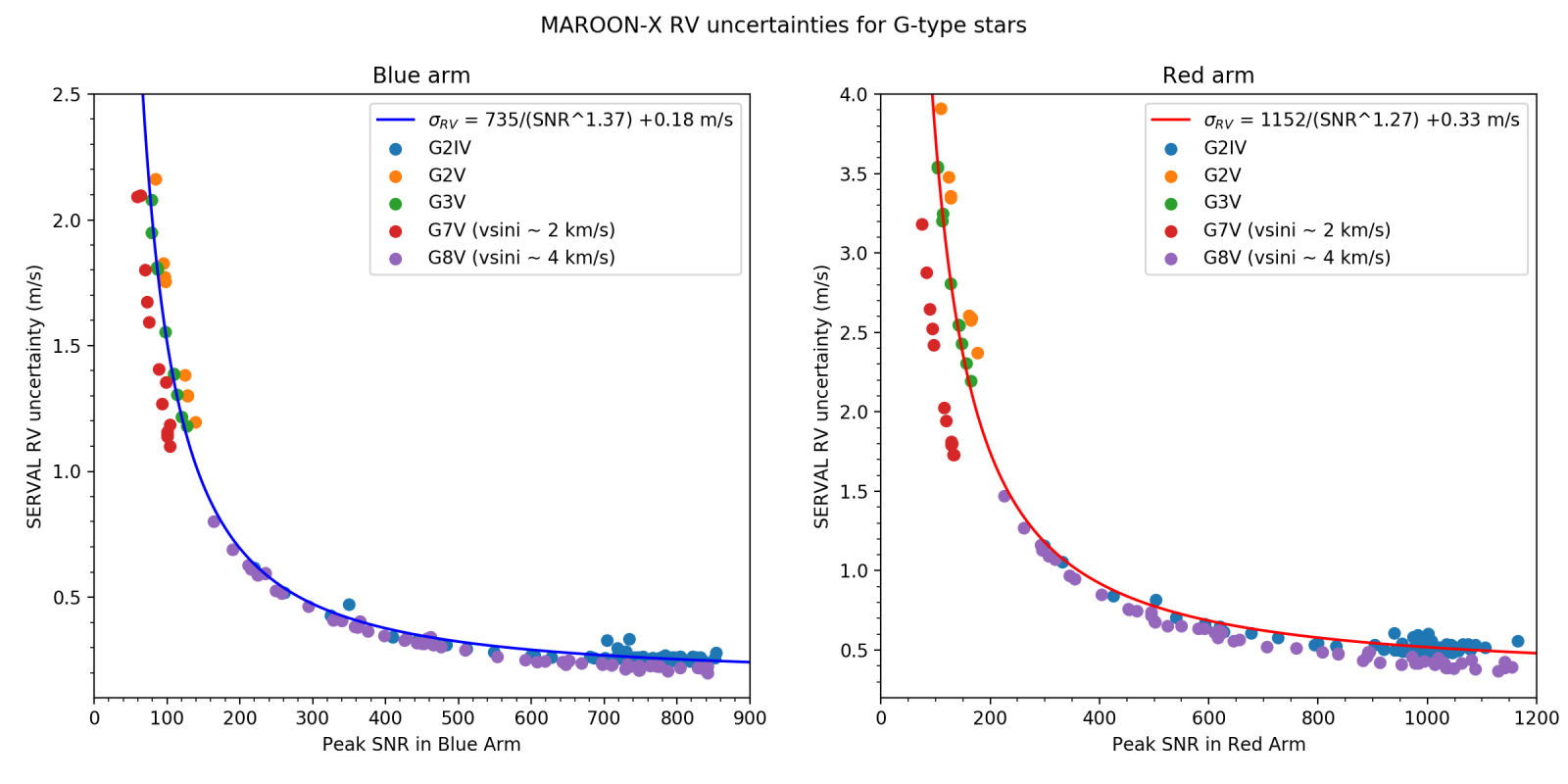
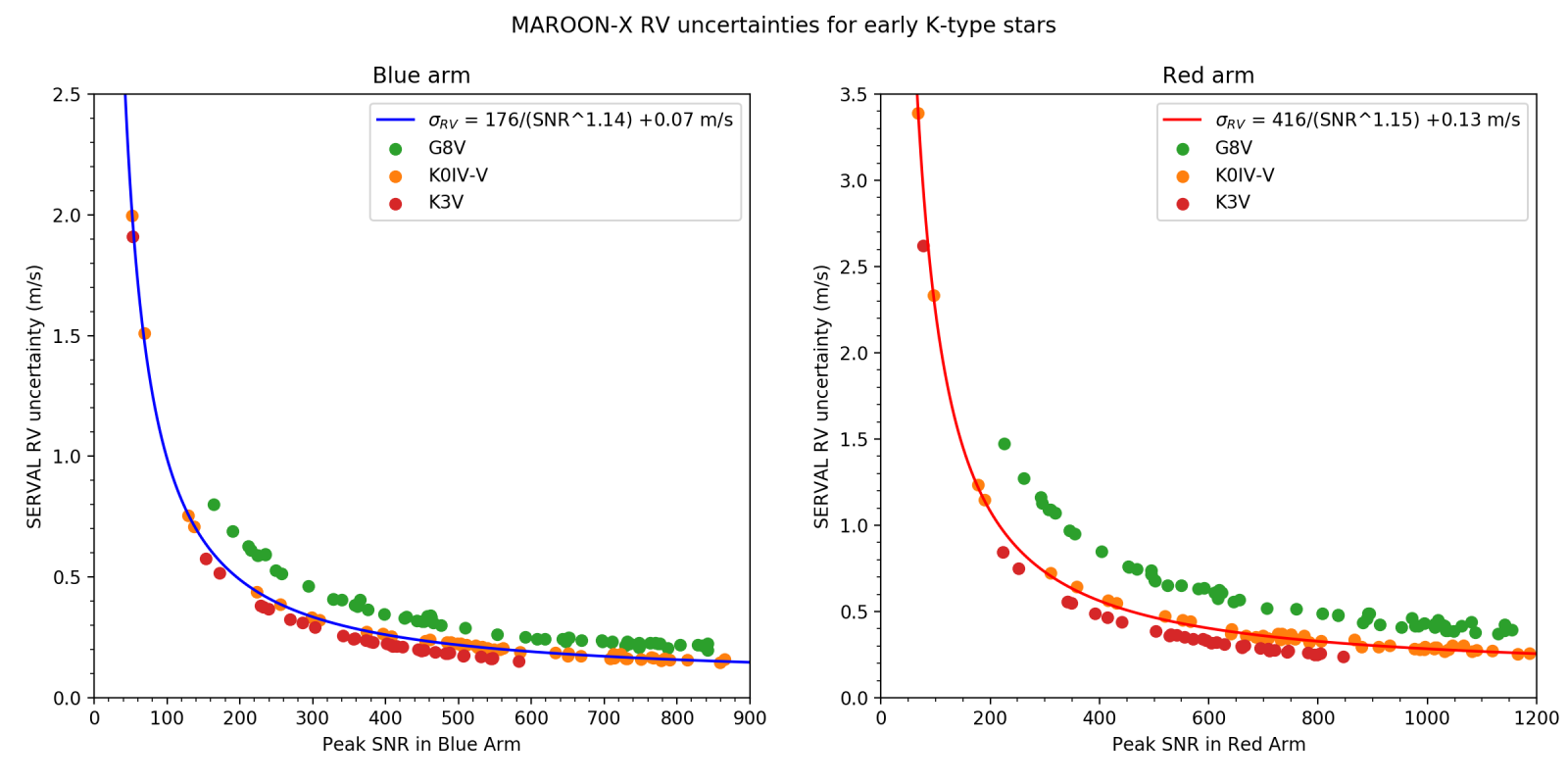
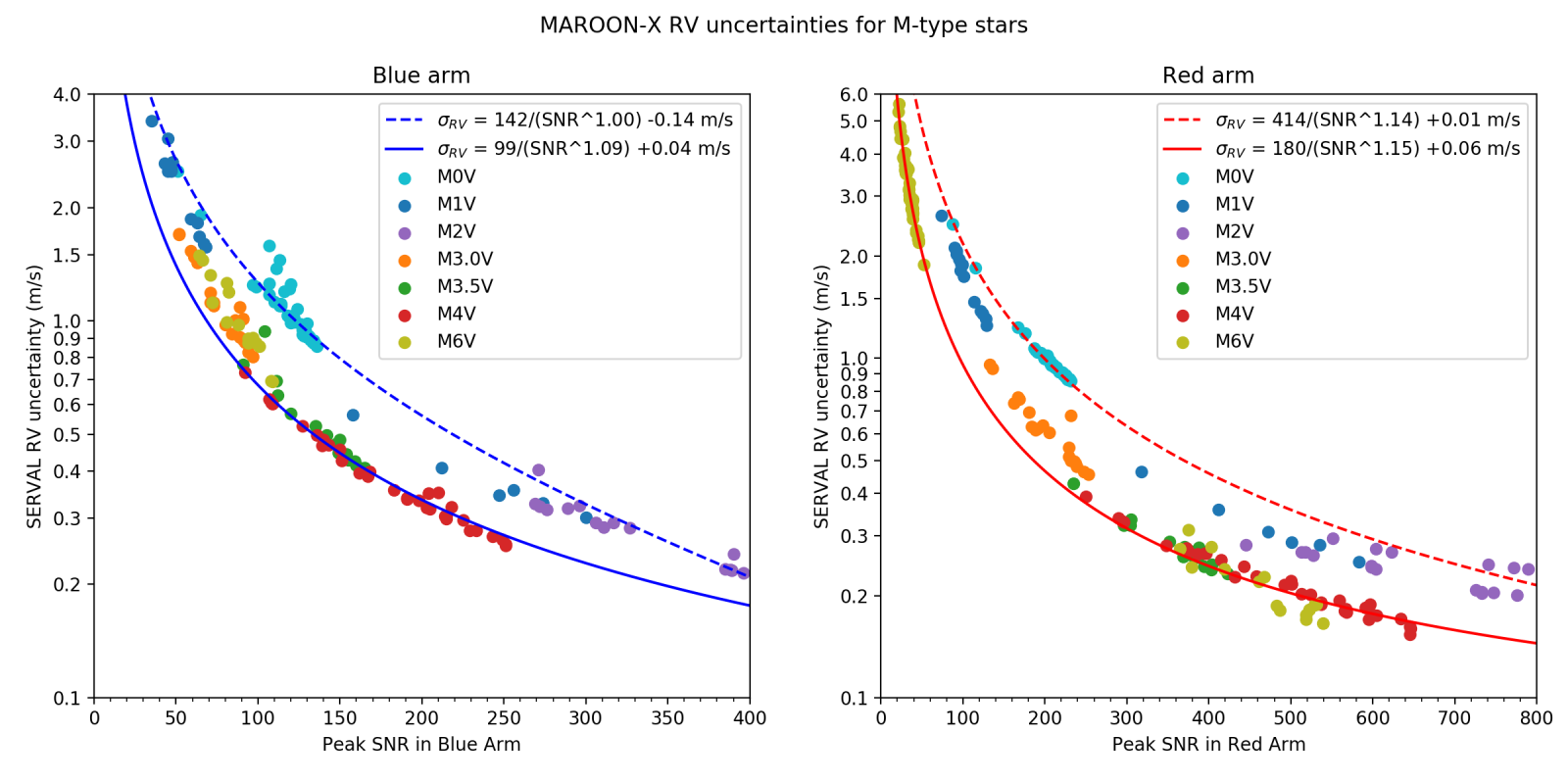
Figure F2: Empirical RV uncertainties for slow rotators of different spectral type as a function of peak SNR of MAROON-X’s blue (left) and red (right) arms.